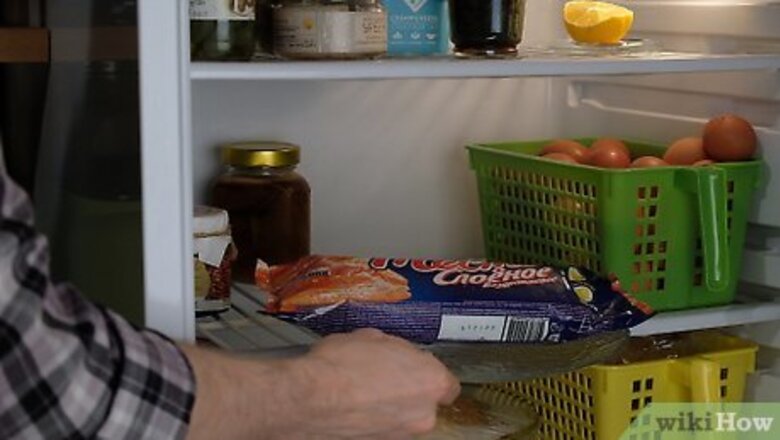
views
Thawing and Unrolling the Pastry
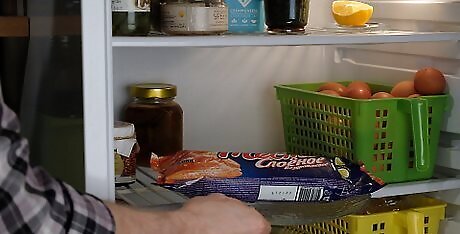
Place the puff pastry in the fridge to thaw completely before using it. Remove the puff pastry from the freezer and set it in the fridge to thaw overnight, or for at least 3-4 hours. If you’re in a hurry, thaw the puff pastry dough by setting it on the countertop at room temperature for 30-40 minutes. If you’re thawing it on the countertop, keep an eye on it to make sure it doesn’t become too warm and limp. Once the puff pastry has thawed, use it within 24 hours. The pastry box should have thawing instructions specific to the brand of puff pastry.
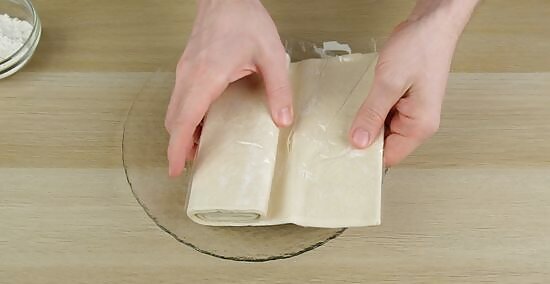
Unfold the puff pastry carefully so it doesn’t crack. If you start to unroll the puff pastry from the packaging and notice it crack or break at the seams, this means it’s not quite done softening. Leave it for a few minutes and try again once it’s more thawed. Go slowly as you unroll it to prevent cracks from forming. Peel off any liners that you find in the packaging of the puff pastry dough. If the dough does crack, wet your fingers and press the seams together gently to rejoin them.
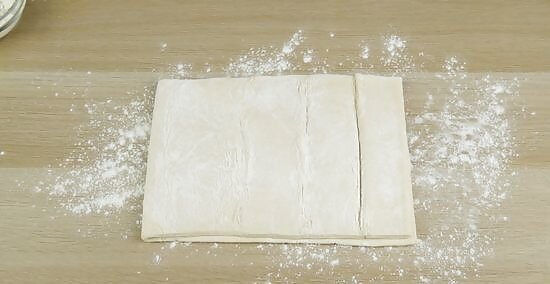
Sprinkle flour or sugar on the puff pastry to keep it from sticking. Once the puff pastry is rolled out in an even layer, sprinkle flour, sugar, or even grated cheese on it, depending on the recipe. This will keep the puff pastry from sticking to you as you work with it. Sprinkle flour, sugar, or cheese on your work surface as well to keep the puff pastry from sticking to it. If you’re making a sweet recipe, sprinkle cinnamon sugar on the puff pastry. A recipe calling for cheese should have a puff pastry sprinkled with grated cheese.
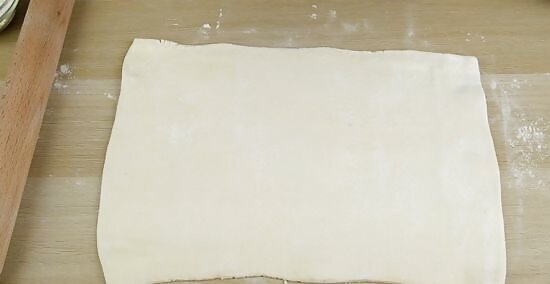
Roll the puff pastry out gently to avoid pressing too hard on it. If you press down too hard on the puff pastry while rolling it, it could flatten it so much that it doesn’t puff up correctly. Either roll it out gently using your fingers or lightly move a rolling pin over the puff pastry to create a level surface. Cover your rolling pin in flour or sugar to prevent it from sticking to the puff pastry.
Shaping and Baking the Puff Pastry

Line a pan or baking sheet with parchment paper. This keeps the puff pastry from sticking to the baking sheet or pan. Rip off a piece of parchment paper large enough to cover the pan and hold all of the puff pastry.
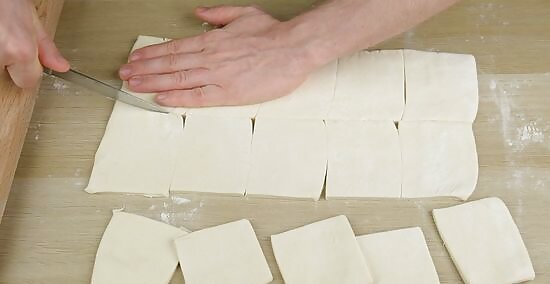
Cut the puff pastry using a sharp knife and shape it according to the recipe. Using a sharp knife is important because a dull one can ruin the layers of puff pastry by crushing them instead of cutting through them smoothly. Cut the puff pastry into whichever shape you desire and shape it according to the specific recipe you’re using. For example, you might cut it into small triangles or squares for small appetizers, or leave the puff pastry in one large circle for a crust. Keep the puff pastry chilled when you’re working with it to make cutting it easier. If there are pieces that are thawed but you aren’t ready to use them yet, keep them in the fridge.
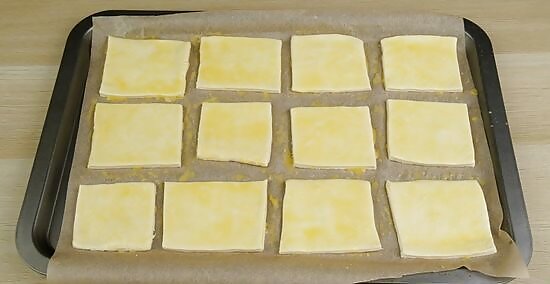
Add an egg wash to the puff pastry to seal the edges. An egg wash will give the puff pastry a nice shine, as well as act as glue if you need to seal certain edges of the puff pastry for things like turnovers. Crack an egg in a bowl and mix it up before brushing the egg onto the puff pastry using a basting brush. This will also enhance the taste of your puff pastry.

Prick the pastry with a fork to keep it from puffing up too much. If you want the middle of your puff pastry to stay flat, use a fork to puncture the surface so air can be released, preventing the puff pastry from rising. Otherwise, the pastry will puff up as expected. For example, you might leave a puffy crust around the edges and only prick the middle of the pastry.
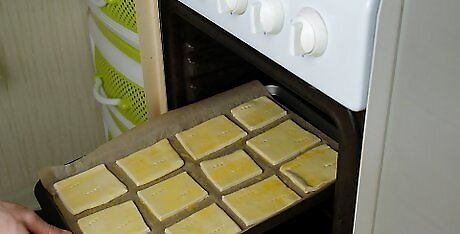
Bake the puff pastry on the baking sheet for 10 minutes or until browned. Spread out the puff pastries on the lined baking sheet. How long you bake your puff pastry will depend on the size of your pastries and what type of filling is in them, so follow the instructions from the recipe for more precise directions. Once the pastries have browned and are dry, they’re ready to be taken out. Many recipes say to bake the puff pastries at 425 °F (218 °C) until they puff up, and then to change the temperature to 375 °F (191 °C) until they’re brown and done.
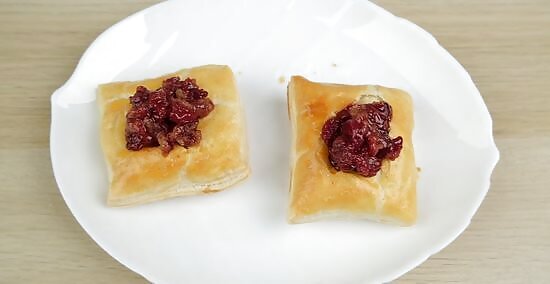
Avoid overfilling your puff pastries so they don’t become soggy. Since the pastry dough is so light once it’s baked, it can get soggy very quickly if there’s too much filling or the filling is left in the pastry for too long without being eaten. Try not to weigh the pastry down with an excessive amount of fillings or toppings so it’s still easy to eat. If you’re following a recipe, the recipe will tell you approximately how much filling to put in each pastry so it’s not too full.














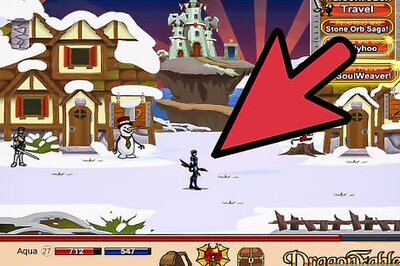




Comments
0 comment